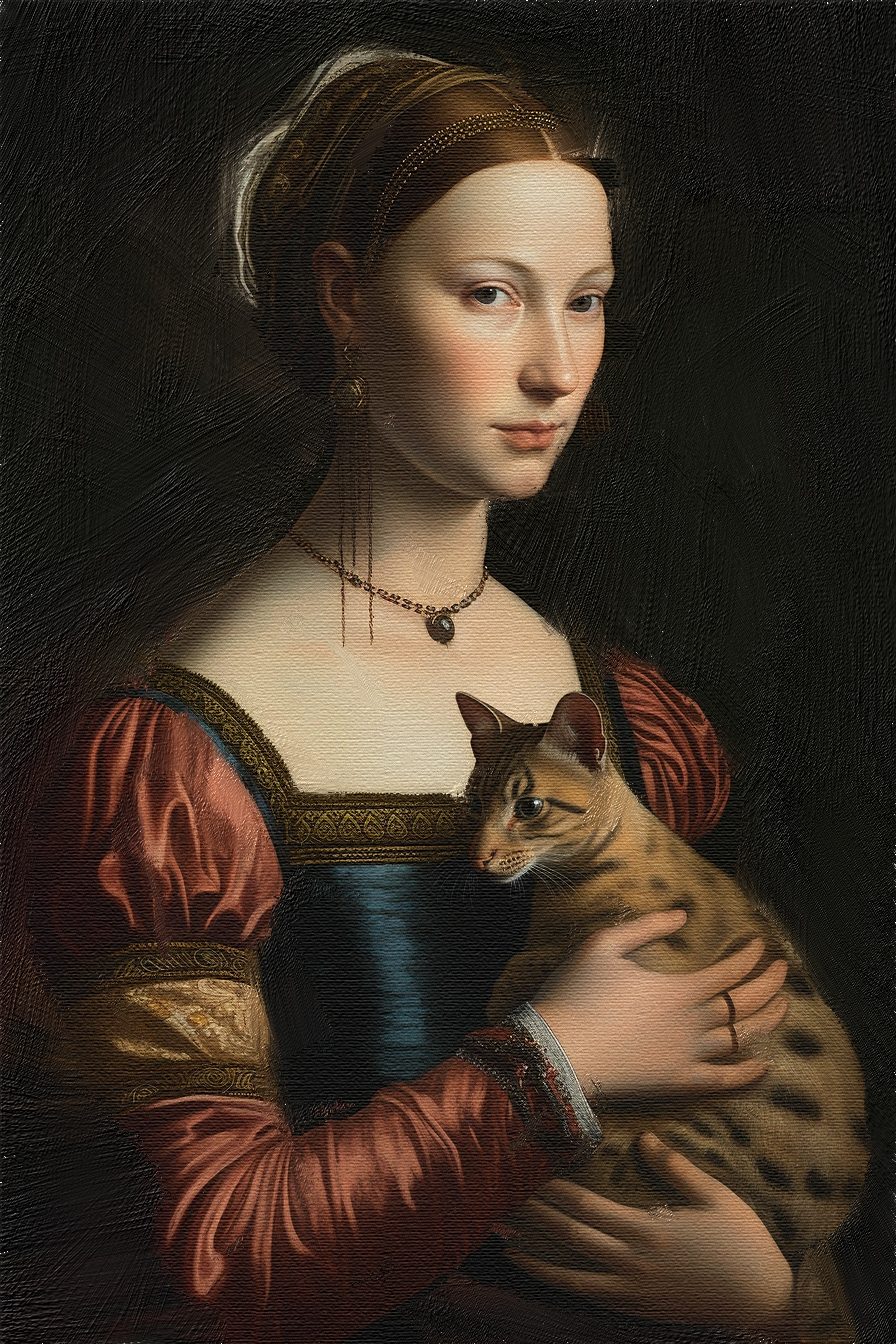
What is The Lady With An Ermine Painting

The Lady With An Ermine: Unveiling the Masterpiece by Leonardo da Vinci
The art world is filled with masterpieces that evoke awe and wonder, and among them stands The Lady with an Ermine, a timeless portrait painted by the genius of the Renaissance, Leonardo da Vinci. This enigmatic artwork, created between 1489 and 1490, captures not only the elegance of its subject but also the extraordinary skill and intellect of its creator. In this blog post, we will delve into the history, symbolism, and artistic brilliance of this iconic painting.
The Subject: Cecilia Gallerani
The identity of the young woman in the portrait has been a subject of much intrigue and scholarly research. She is widely believed to be Cecilia Gallerani, a noblewoman of Milan and a muse to Ludovico Sforza, Duke of Milan, who was also Leonardo’s patron. Cecilia was known for her intelligence, beauty, and poetic talent. At the time the painting was commissioned, she was the duke’s mistress, and her association with the ermine is both symbolic and personal.
The Ermine: A Symbol of Purity and Power
The inclusion of the ermine in the painting is no arbitrary choice. In Renaissance symbolism, the ermine represents purity and virtue, as it was believed to prefer death over soiling its white coat. Additionally, the ermine was a symbol associated with Ludovico Sforza, who had been awarded the Order of the Ermine by the King of Naples. By painting Cecilia holding the ermine, Leonardo subtly alludes to her connection with Ludovico and elevates her status in the portrait.
The Artistic Brilliance
Leonardo’s The Lady with an Ermine exemplifies his mastery of portraiture. The painting showcases his groundbreaking use of chiaroscuro—the interplay of light and shadow—to create a sense of depth and three-dimensionality. The soft transitions between light and dark tones bring Cecilia’s features to life, making her appear almost tangible.
Leonardo’s keen observation of anatomy and human expression is evident in the delicate rendering of Cecilia’s hands, the graceful turn of her neck, and the subtle play of emotions on her face. The ermine, too, is depicted with remarkable detail, from the texture of its fur to its attentive gaze, as if it were a living creature caught in a moment of stillness.
Historical Journey
The Lady with an Ermine has had a fascinating history. After its creation, the painting remained in private collections for centuries. It eventually resurfaced in the 19th century and has since been recognized as one of Leonardo’s most significant works. Today, it resides in the Czartoryski Museum in Kraków, Poland, where it continues to captivate art enthusiasts from around the world.
The Enigma of Leonardo
Leonardo da Vinci’s genius lies not only in his technical skills but also in his ability to infuse his works with layers of meaning. The Lady with an Ermine is no exception. The painting invites viewers to ponder the identity of the sitter, the symbolism of the ermine, and the subtle interplay of narrative and aesthetics. It reflects Leonardo’s profound understanding of art, science, and human nature.
Conclusion
The Lady with an Ermine remains a testament to Leonardo da Vinci’s unparalleled artistry and his ability to capture the essence of his subjects. It is a portrait that transcends time, offering a glimpse into the world of the Renaissance and the mind of one of history’s greatest artists. Whether you are an art historian, a casual admirer, or someone encountering this masterpiece for the first time, The Lady with an Ermine is a work that will continue to inspire and intrigue for generations to come.




